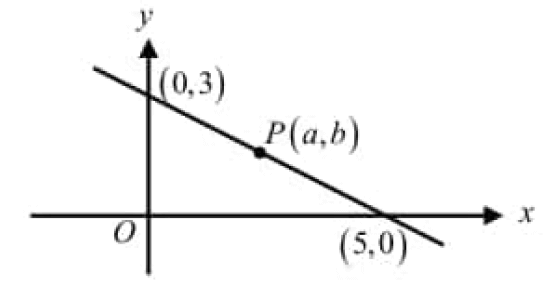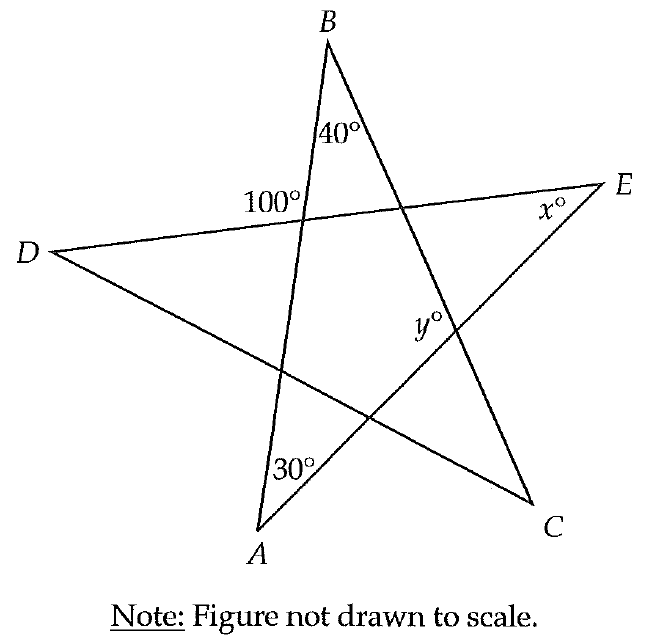WHICH VALUE OF X SATISFIES THE EQUATION
To find the value of x which satisfies the given equation, you have to isolate x.
To isolate x, you have to get rid of all the values around the variable using one or more of the following properties.
(i) Addition property of equality.
(ii) Subtraction property of equality.
(iii) Multiplication property of equality.
(iv) Division property of equality.
Find the value of x which satisfies the given equation :
Example 1 :
x + 11 = 17
Solution :
x + 11 = 17
Subtract 11 from both sides.
x = 6
Example 2 :
3x + 4 = 25
Solution :
3x + 4 = 25
Subtract 4 from both sides.
3x = 21
Divide both sides by 3.
x = 7
Example 3 :
5x + 3 = 17 - 2x
Solution :
5x + 3 = 17 - 2x
Add 2x to both sides.
7x + 3 = 17
Subtract 3 from both sides.
7x = 14
Divide both sides by 7.
x = 2
Example 4 :
12 - x = 8
Solution :
12 - x = 8
Subtract 12 from both sides.
-x = -4
Multiply both sides by -1.
x = 4
Example 5 :
x/6 = 7
Solution :
x/6 = 7
Multiply both sides by 6.
x = 42
Example 6 :
(3x + 2)/4 = 5
Solution :
(3x + 2)/4 = 5
Multiply both sides by 4.
3x + 2 = 20
Subtract 2 from both sides.
3x = 18
Divide both sides by 3.
x = 6
Example 7 :
2x/3 + 1/2 = 5/6
Solution :
2x/3 + 1/2 = 5/6
The least common multiple of the denominators (3, 2, 6) is 6.
Multiply both sides by 6 to get rid of the denominators.
6(2x/3 + 1/2) = 6(5/6)
Using distributive property,
6(2x/3) + 6(1/2) = 5
2(2x) + 3 = 5
4x + 3 = 5
Subtract 3 from both sides.
4x = 2
Divide both sides by 4.
x = 1/2
Example 8 :
2x/3 + x/6 = 5
Solution :
2x/3 + x/6 = 5
The least common multiple of the denominators (3, 6) is 6.
Multiply both sides by 6 to get rid of the denominators.
6(2x/3 + x/6) = 6(5)
Using distributive property,
6(2x/3) + 6(x/6) = 30
2(2x) + x = 30
4x + x = 30
5x = 30
Divide both sides by 5.
x = 6
Example 9 :
(x - 2)/3 + 1/6 = 5/6
Solution :
(x − 2)/3 + 1/6 = 5/6
The least common multiple of the denominators (3, 6) is 6.
Multiply both sides by 6 to get rid of the denominators.
6[(x − 2)/3 + 1/6] = 6(5/6)
Using distributive property,
6[(x - 2)/3] + 6(1/6) = 5
2(x - 2) + 1 = 5
2x - 4 + 1 = 5
2x - 3 = 5
Add 3 to both sides.
2x = 8
Divide both sides by 2.
x = 4
Example 10 :
The number of people on the school board is represented by x. Two subcommittees with an equal number of members are formed, one with (2x/3) - 5 members and the other with x/4 members. How many people are on the school board?
Solution :
From the given information, it is clear that we have to find the value of x which satisfies the following equation.
2x/3 - 5 = x/4
(2x - 15)/3 = x/4
The least common multiple of the denominators (3, 4) is 12.
Multiply both sides by 12 to get rid of the denominators.
12[(2x - 15)/3] = 12(x/4)
4(2x - 15) = 3x
8x - 60 = 3x
Subtract 3x from both sides.
8x - 60 = 3x
5x - 60 = 0
Add 60 to both sides.
5x = 60
Divide both sides by 5.
x = 12
There are 12 people on the school board.
Kindly mail your feedback to v4formath@gmail.com
We always appreciate your feedback.
©All rights reserved. onlinemath4all.com
Recent Articles
-
Digital SAT Math Problems and Solutions (Part - 134)
Apr 02, 25 12:40 AM
Digital SAT Math Problems and Solutions (Part - 134) -
SAT Math Resources (Videos, Concepts, Worksheets and More)
Apr 02, 25 12:35 AM
SAT Math Resources (Videos, Concepts, Worksheets and More) -
Digital SAT Math Problems and Solutions (Part 135)
Apr 02, 25 12:32 AM
Digital SAT Math Problems and Solutions (Part 135)

